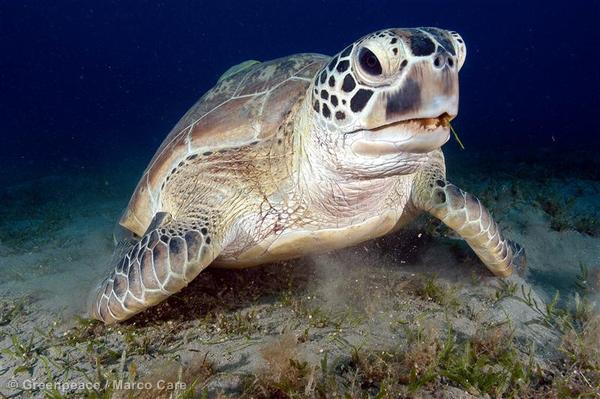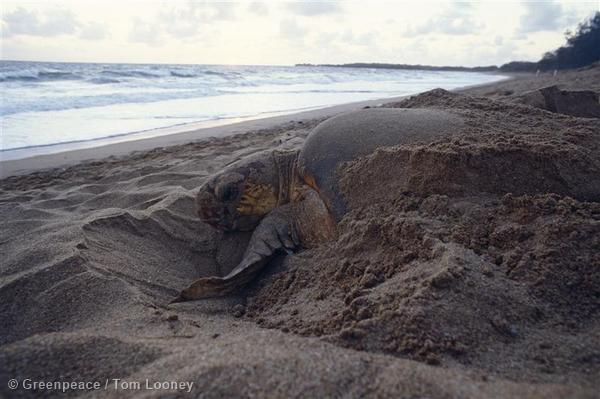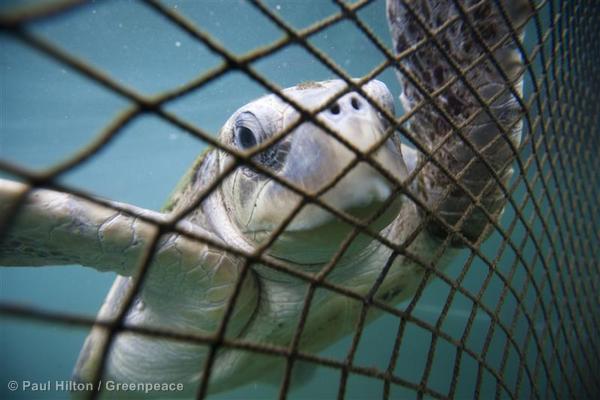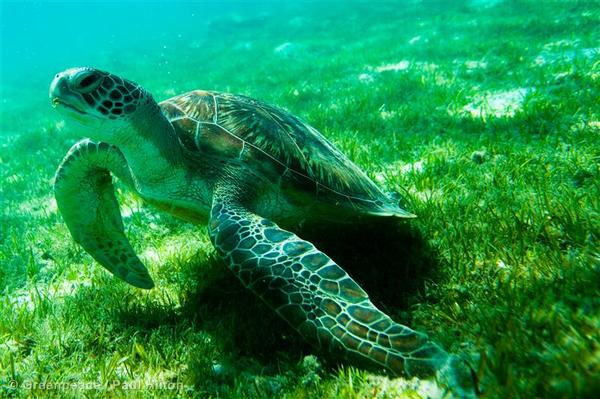Today isWorld Turtle Day. It’s a perfect excuse to shell out a bit of love and respect to sea turtles, the iconic ocean ambassadors.
Turtles are ancient creatures, largely unchanged for many millions of years. The biggest turtle roaming our seas today is the massive leatherback, a turtle with a leathery shell that can grow to be as big as a double bed. But even they start life as a ping-pong ball sized egg.
The first trial of life for baby turtles is adaring dash across the beachfrom where their mother laid eggs. Only the most fortunate make it to the sea by dodging predators such as birds, crabs, and foxes.
Todays turtles are small when compared to the extinct species Archelon. This Dino-turtle was twice as long as todays leatherbacks. Its head alone was up to three feet long.
Some turtles are named for the way they look. The loggerhead has a big head. The hawksbill has a very pronounced beak. However green turtles are named for having green fat under their shell.
Different species have different tastes in food: from somewhat dull diets of jellyfish or sea grass, to sponges to crunchy crabs. Some are even known to snack on flying fish, which is pretty impressive catching.
Like other reptiles, turtle babies gender is influenced by temperatures. Hotter temperatures produce more females. A recent study showed that climate change isan increasing threatas a result.
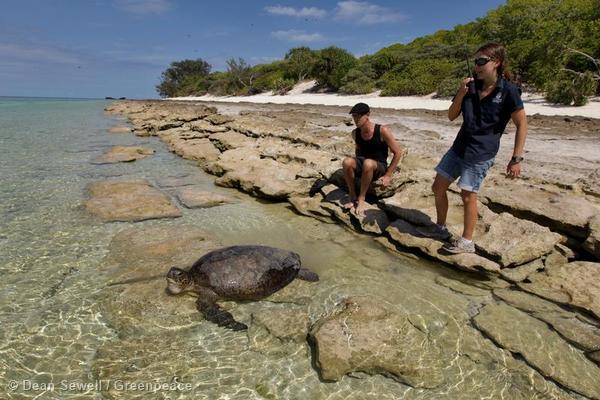
The release of a green turtle that became trapped in the trees while trying to lay her eggs overnight. The rescue was performed by Greenpeace’s Esperanza captain Mike Finken and Cathy, a Heron Island research scientist.
Six out of the seven of the worlds species ofturtles are in danger, from us. Entanglement in fishing gear, habitat destruction, pollution, and hunting have all taken their toll. Greenpeace is working to tackle destructive methods of fishing thatcatch and kill turtles. We’re also taking onclimate change, pollution, and thedestructionof nesting sites.
But now we need your help to protect turtles ocean homes.
Were working to establish aglobal network of protected ocean sanctuarieson the open seas, areas beyond any one countrys own jurisdiction. From the Mediterranean to the Sargasso, the North Pacific to the Bay of Bengal, protecting these areas will help our turtles.
So, on World Turtle Day please join us byadding your name to the call for ocean sanctuaries,so we can lobby governments on behalf of you, and our turtle-y awesome flippery friends.
